I'd need to add a simple dot/vertical line on my bar chart that has a dynamical X value, and 0 for Y value. Preview of what I need (the red dot):
Where the green values are dynamic.
Preview of my current state:
Where 3.30 should be the X coordinate of the dot - [3.30, 0].
I'm using Vue chart for the charts and I tried do create a mixed one with the bar and scatter but scatter requires type: 'linear' for it's xAxis which doesn't suit my need for the bar chart.
So I tried with chartjs-plugin-annotation and it's box type which accepts "coordinates" but the problem here is that the X value must be a fixed value on the X axis (labels object). If I put for the X axis [3,0] it will work, but if there is a decimal number, like [3.5, 0], it won't work.
// data
options: {
responsive: true,
maintainAspectRatio: false,
legend: {
display: false
},
scales: {
yAxes: [{
ticks: {
min: 0,
max: 1,
stepSize: 0.1
}
}]
}
}
// computed
labels: [1, 2, 3, 4, 5, 6], // fixed value, there are always 6 bars
datasets: [
{
label: 'Values',
backgroundColor: '#f89098',
data: this.tableInputValues // array of decimal values
}
]
So, my question is how to put a "simple" dot, or a vertical line, on a Chart.js bar chart where the dot has a dynamical value for the X axis -> [dynamic value, 0].
FYI - it's about Expected value


